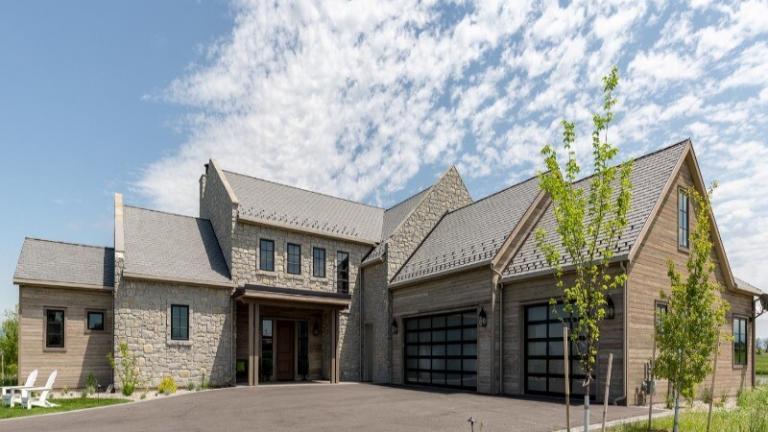Sustainability is becoming a priority for homeowners, especially when deciding on home siding. With the growing awareness of environmental issues, homeowners are rethinking traditional choices and focusing on materials that reduce environmental impact, improve energy efficiency, and offer long-term value. Siding, an essential part of a home’s exterior, protects the structure and contributes to its environmental footprint. We will explore why sustainable siding is becoming a key consideration for homeowners and how these choices align with broader trends toward eco-friendly living.
Environmental Benefits of Sustainable Siding
One of the main reasons sustainability is gaining importance in siding choices is its potential to reduce environmental harm. Traditional siding materials like vinyl and aluminum are energy-intensive to produce and often end up in landfills at the end of their lifecycle. In contrast, sustainable options such as fiber cement, reclaimed wood, and recycled metal minimize waste and use fewer natural resources during production. These materials often come from renewable or recycled sources, reducing the demand for raw materials and helping preserve ecosystems.
Sustainable siding also supports lower energy consumption during the building’s lifetime. Many eco-friendly siding materials offer superior insulation properties, reducing the energy needed to heat or cool a home. For instance, insulated siding can create a thermal barrier that prevents energy loss, significantly reducing utility bills and carbon emissions. Moreover, homeowners opting for sustainable siding often choose materials treated with non-toxic finishes, which limits the release of harmful chemicals into the environment. These combined benefits make sustainable siding a compelling choice for environmentally conscious homeowners.
Long-Term Cost Savings and Durability
Sustainability in siding is not just about environmental benefits; it also offers financial advantages for homeowners. While some sustainable materials may have a higher upfront cost, they often deliver long-term savings due to their durability and reduced maintenance requirements. For example, fiber cement siding is resistant to rot, pests, and extreme weather conditions, which extends its lifespan compared to traditional wood or vinyl siding. Similarly, metal siding made from recycled materials can last for decades without frequent repairs or replacements.
Durable materials also mean fewer resources are consumed over time. Frequent replacement or repair of siding materials generates waste and increases a home’s carbon footprint. Homeowners can reduce financial and environmental costs by choosing sustainable, long-lasting options. Additionally, energy-efficient siding often qualifies for tax credits or rebates, further enhancing the financial appeal of sustainable choices. These financial incentives, coupled with the durability of eco-friendly materials, make sustainable siding an economically sound investment.
Meeting Regulatory and Market Trends
As governments and industries shift toward sustainable practices, homeowners are increasingly encouraged—or even required—to adopt eco-friendly materials. Many building codes now emphasize using energy-efficient and sustainable products to meet environmental targets. Failing to comply with these standards in some regions can result in penalties or increased costs during future home sales. For example, homes that incorporate sustainable materials may qualify for certifications such as LEED, which can boost property values and appeal to eco-conscious buyers.
Beyond regulations, market trends also favor sustainable siding choices. The rise in green building practices has led to an increase in demand for environmentally friendly materials. This shift has prompted manufacturers to innovate and produce high-quality, sustainable siding options that appeal to modern consumers. Homeowners investing in sustainable siding align themselves with these trends, ensuring their homes remain marketable and attractive in a competitive real estate landscape. Additionally, sustainable materials often enhance a home’s aesthetic appeal, offering unique textures and finishes that stand out from traditional options.
Enhancing Energy Efficiency and Climate Resilience
Sustainable siding materials improve energy efficiency and enhance a home’s resilience to climate change. With extreme weather events becoming more common, homeowners need siding to withstand severe conditions such as high winds, heavy rainfall, and temperature fluctuations. Materials like fiber cement and engineered wood are designed to be highly durable, offering protection against harsh weather while maintaining their structural integrity.
Energy-efficient siding materials also reduce a home’s reliance on non-renewable energy sources. For instance, some siding options come with reflective coatings that help reduce heat absorption during hot weather, keeping interiors cooler and reducing the need for air conditioning. This can be particularly beneficial in regions experiencing rising temperatures due to climate change. By improving energy efficiency and climate resilience, sustainable siding materials allow homeowners to future-proof their properties while reducing their environmental impact.
Supporting Ethical and Eco-Conscious Lifestyles
Sustainable siding installation by Tukwila Siding contractor aligns with the values of homeowners who prioritize ethical and eco-conscious living. Many eco-friendly siding materials are sourced responsibly, ensuring fair labor practices and minimal environmental disruption during extraction or production. For instance, reclaimed wood siding repurposes materials that would otherwise be discarded, reducing waste while preserving natural resources. Similarly, recycled metal siding helps minimize mining activities, which can devastate ecosystems.
Households that choose sustainable siding contribute to a broader movement toward environmental stewardship. This decision reflects a commitment to reducing their carbon footprint and supporting industries that prioritize sustainability. Moreover, eco-conscious homeowners often inspire their communities to adopt similar practices, creating a ripple effect that promotes sustainable living on a larger scale. This ethical dimension of sustainable siding choices resonates deeply with those who value social and environmental responsibility.
Sustainability is no longer an optional consideration in homeowners’ siding choices. As environmental concerns grow and market trends shift toward eco-friendly practices, the demand for sustainable materials reshapes the home improvement landscape. Sustainable siding reduces environmental impact, offers long-term cost savings, enhances energy efficiency, and supports ethical living. With durable, aesthetically appealing options, homeowners can make choices that benefit their properties and the planet.
